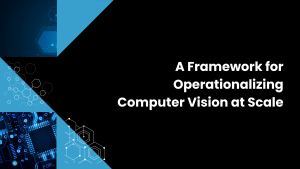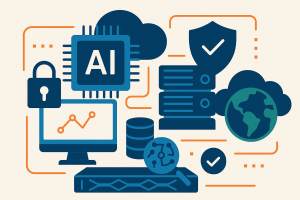Premise
Oracle M7 technology is meeting or exceeding its announced performance claims against the previous generation of Oracle products. Even with very conservative assumptions, the business case for migration from T5 to T7 servers is a strong one.
Introduction
In earlier research on the limits of adding additional cores, and the need for additional specific function to aid software, Wikibon concluded:
“The x86 microprocessor has reached an architectural limit for performance-constrained applications. This limit is as the result of a processor cycle-time freeze, and a limit to the number of processor cores that can be applied to an application.”

Source: Oracle 2016
In 2015, Oracle announced a new SPARC processor with over 10 million transistors. Oracle announced a series of servers using the M7 processors, called the T7 series (see Figure 1). Wikibon’s earlier research on the M7 entitled “Software-in-Silicon Drives Oracle SPARC M7 Processors” concluded:
“With the cost of the average cost after discount for Oracle Enterprise licenses at over $30,000 per core, the database and application costs are the much higher than infrastructure costs such as processors. Wikibon recommends that the business benefits of improved performance, functionality and end-user productivity, as well as database cost optimization, should be included in any financial analysis.”
This research looks at early user experience, and puts together a business case for the evaluation of T7 adoption in a high application/software value workload environment (see link for a definition and discussion on high value workloads). Figure 2 below shows the overall difference in cost between Oracle’s T5-2 and the new T7-2, which is $1.2 Million. This conclusion is based on the detailed assumptions in the “The Business Case for M7 Technology” section below.

Source: © Wikibon 2016
Experience of Early Adopters
All the early adopters Wikibon interviewed were users of previous generation T5 servers, and had installed T7 processors with the M7 technology and the Solaris operating system. On a cautionary note, this group of users with long T5 servers and previous generation experience may not be representative of a broader range of enterprise Oracle users.
Nevertheless, the T7 early adopters were all enthusiastic about their initial findings with T7. The main benefit themes we heard from the early adopters fell under the following headings: Scalability, Consolidation, Flexibility and Security.
- Scalability – All the users reported significant speed-ups of applications. This ranged from a general ability to load twice as many applications on a T7 compared with a T5 with improved response time to individual application performance being improved by an “order of magnitude”. Analytic applications running on the latest level of Oracle (12c) were more likely to experience the most significant improvements.
- Consolidation & Flexibility – Some users were planning to deploy the T7 to run both the database and the application on the same server, using Oracle trusted partitions to ensure effective use of the database licenses. Deploying in this fashion led to very significant improvements in throughput, since the latency and latency variation for communication between the database and application layers were both radically reduced. In addition, the database configuration was more easily adaptable (e.g., use of Oracle database features Real Application Clusters (RAC), Active Data Guard, Partitioning) to just those features required to support the application and the business.
- Security – Security was a hot-button for all the users. Some had previously looked at the end-to-end encryption capabilities of Oracle, but had not been able to justify the high costs on both the servers and correspondingly on the additional Oracle licenses required. The ability to add encryption without overhead was an attractive feature, but one that would need involvement from the application and operational departments. Projects like this would need planning and take time. One user commented that end-end encryption should and would in the future be delivered by default.
The Business Case for M7 Technology
The business case for migration from T5 to T7 is assumed to involve a high application and software value workload. The environment utilizes Oracle database functions extensively to ensure high availability and high performance, and the infrastructure is tuned to optimize performance and reduce the number of cores required. The following are key considerations:
Oracle Processor Core Factor
The Oracle Processor Core Factor Table has kept the processor core factor for the T7 at 0.5, the same as the T5 and for all the Intel x86 systems. An Oracle database license enables 2 cores. However, the processor core factor for Intel Itanium, and IBM Power series and IBM z is at 1.0, doubling the cost of an Oracle Database license. In addition Oracle’s trusted partitions are supported on the T5-2 & T7-2, which allows the Oracle license to be pinned to specific cores for both virtual (with OVM) and bare metal.
Performance and Cost Assumption For Business Case Analysis
Based on the benchmarks, the performance of the T7-2 is about 2.4 times faster than the T5-2. The number of cores has been doubled from 16 to 32 with the number of threads doubling as well. The 3.6GHz processor has been upgraded to 4.13GHz, a 15% increase, with another 5% coming from other improvements. This results in each T7-2 core being about 20% faster per core than the T5.
Wikibon’s findings are that by deploying the much larger T7-2 servers with the application and database together, the performance per core would be about 50% higher on the T7. Assuming that 30% of the workload can be migrated to this more efficient topology, the T7 configuration would require about 1 – (30% x 50% + 70% x 20%) = 71% the number of cores. Within the model, Wikibon has assumed that 3 x T7-2 servers (192 cores) would be required compared to 8 x T5-2 (256 cores).
Based on previous research entitled “The Value of Converged Infrastructure for High Value Mixed Workload Environments“, Wikibon has assumed that the cost/core of the three T7-2 servers is $3,750, including storage and networking. The cost of the eight T5-2 servers is discounted by 85%/core = $3,187/core. This 15% per core reduction is based on the T5-2 being a slower processor without the additional M7 functionality. Maintenance is assumed to be 12% of purchase price.
The Oracle database licensing is assumed to be available on 20% of the cores. We configured the Diagnostic Pack, Tuning Pack, Active Data Guard and Real Application Clusters (RAC) in the solution. The discount on the Oracle software is pegged at 50%.
DBA support is assumed to be 50 minutes/month/DB core, at a cost of $200/hour, with operations support of 6 minutes/month/core for all cores, at a cost of $140/month.
Business Case Figures and Tables
Figure 3 shows the detailed breakdown of the component costs over three years. The primary differentiating factor is the Oracle database license cost, which is about $1 Million over three years.

Source: © Wikibon 2016
Table 1 shows the detailed calculations that created the business case results in Figure 3.

Source: © Wikibon 2016
Table 2 shows the results of the assumptions in Table 1 applied to a 3-year business case format. The overall 3-year cost of the T5-2 technology is $5.5 million, compared with $4.3 million with the T7-2 technology. The overall net present value (5%) of the savings is about $1.1 million over three years.

Source: © Wikibon 2016
The break-even for the comparison is 0 months, mainly because fewer software licenses need to be purchased. This means the normal business metrics of ROI and IRR are no longer applicable. The business case assumes than the software licenses were purchased at the beginning of the project. In some cases there will be savings on licenses already acquired. These savings can be applied to the reuse of the licenses by other projects. The cash flow timing in this case will be different, but the overall business case very similar.
Conclusions
The analysis of the Oracle M7/T7 technology shows it to be very capable, with a clock speed significantly higher than Intel x86 chips, and higher than the previous T5 technology. This translates into fewer cores being required for the high function processors for high application and software value workloads.
In addition, the M7 technology has a number of advanced functionalities which are baked into the silicon of the M7 technology. These Silicon Services offload specific Oracle database functions such as encryption, compression and advanced analysis. For example, these services allow end-to-end encryption within the database and application to be performed with almost no additional overhead. Previously this would have incurred major budget increases for both hardware and for additional Oracle software licenses.
Action Item
Wikibon strongly recommends that IT executives with responsibility for Oracle software and the associated servers to evaluate the adoption of M7 technology (and T7 server technology) for these high application & software value workloads.


